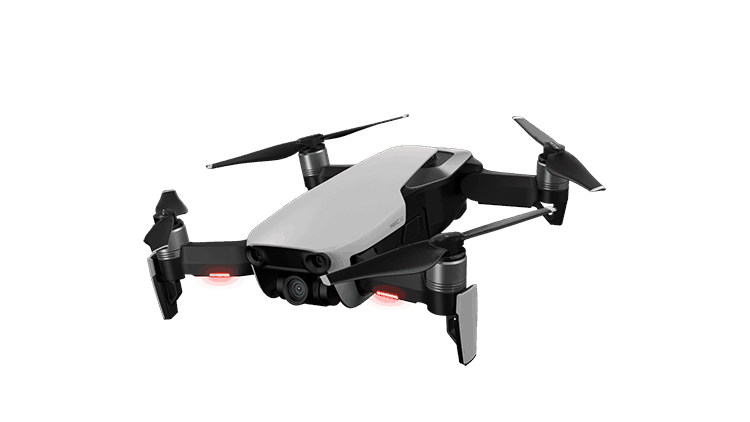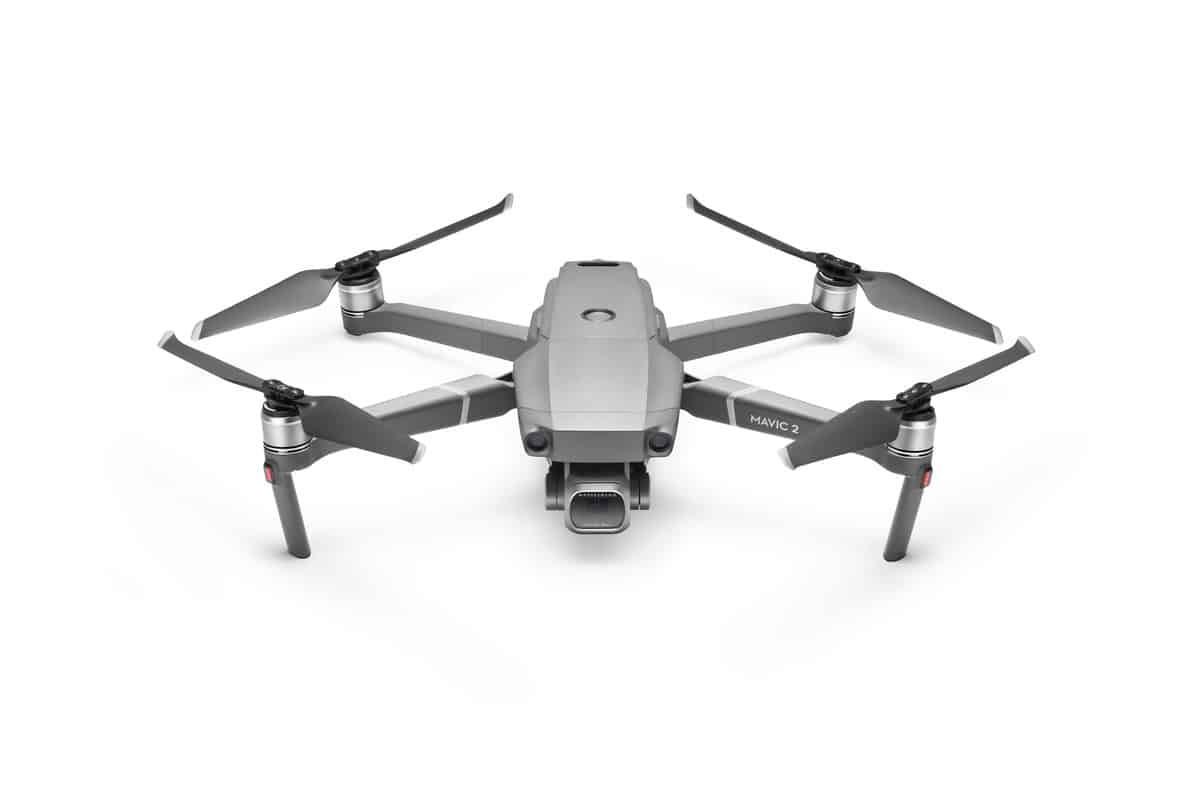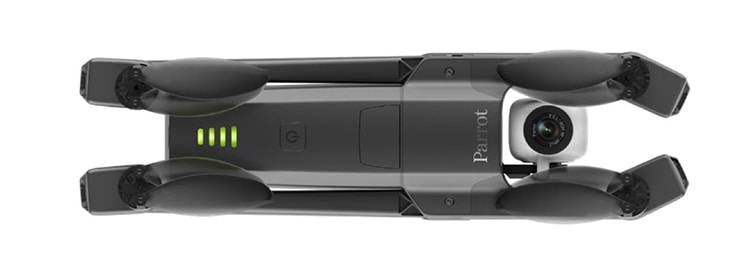The Best Foldable Drones | Light, Compact, and Portable Drones With Folding Arms
BY Isabella Lee
14 March 2019Off-the-shelf, consumer drones afford anyone the ability to take professional quality aerial imagery and videography for any number of reasons (from chronicling vacations to professional endeavors like real estate photography and aerial inspections). Much like the growing number of drone uses, drone designs are on the rise as well.
When deciding what kind of drone to buy, consumers have dozens of options. Consumer drones are evolving rapidly, with early generation models being overtaken by lighter, more compact, and increasingly sophisticated models. A recent evolution in drone development is the foldable drone.

The premise is to build a full-featured drone that can fold up neatly into a compact and portable shape. To achieve this design, typically the arms will fold into the body, creating a streamlined shape that can fit easily into a backpack. This provides more convenience for the traveling drone pilot than earlier year models with stationary arms such as the DJI Phantom—while a very capable machine, it is bulky with limited portability.
Here is a look at the most popular foldable drones on the market today.
DJI Mavic Series
All drones in the DJI Mavic series are foldable, including the:
The Mavic is widely considered to be the marque foldable drone on the market. In fact, it is one of the finer consumer drones on the market, period. Let’s take a look at each and their features.

The introductory model, or at least the more basic of the lineup, is the Mavic Air. Staying consistent with the bulk of the DJI lineup, the Mavic Air is equipped with a 4K camera mounted on a 2-axis gimbal to provide stable, high definition video and still photography.
One unique feature of the Mavic Air not found universally in the Mavic lineup is the 32-megapixel spherical camera, which stitches 25 pictures together in just eight seconds.
Other foldable drone models in the lineup include the Mavic 2 Zoom, Mavic 2 Pro, and Mavic Pro Platinum. Boasting excellent flight envelopes, they are capable of over 30 minutes of sustained flight, many camera options depending upon the model, and all folding into a very discreet and portable body.

Finally, the Mavic series rounds out with the advanced Mavic 2 Enterprise for large-scale commercial applications. Like the Mavic 2 Pro, the Mavic 2 Enterprise features an ultra-compact and foldable design for portability. The Enterprise also features advanced modular accessories that extend users’ capabilities during critical operations like firefighting, emergency response, law enforcement, and infrastructure inspections.
Yuneec Mantis Q
Unlike their competitor DJI, who has been dedicated to drones from inception, Yuneec is a crossover company. Yuneec first established it’s customer base in ready-to-fly (RTF) remote control aircraft circles and successfully crossed over to unmanned aircraft systems (UAS) circles.

The Mantis Q is their latest consumer drone, and their first foray into the foldable drone market. Unlike the DJI Mavic series, which is built to tailor both to consumers and professionals, the Mantis Q is geared more toward the adventurer, traveler, vlogger, or action sports enthusiast. That is not to say that it cannot be used in a commercial niche, particularly real estate photography and video tours where the standard 4K camera is more than adequate.
In terms of features and general utility, the Mantis Q is more similar to the popular DJI Spark than its more comparably sized Mavic series. It is also geared more toward a similar market segment, offering face detection, visual tracking, and a simpler 2-axis gimbal. One area which neither DJI product can match is speed; the Mantis Q can fly up to 44mph in Sport Mode, a solid 13 mph faster than the Mavic can travel. Also, it maintains a robust flight time of 33 minutes.
[Read our full review of the Yuneec Mantis Q.]
Parrot ANAFI
Parrot SA, a derivative of the Parrot Company which manufactures a variety of voice recognition technology and robotics, has been in the drone game since early 2010 when they introduced the AR.Drone. They then bought the majority of SenseFly, who produced the eBee, a very common fixed-wing drone often used in geospatial and engineering work.

They’ve developed a significant following by producing affordable hobbyist and beginner drones. The ANAFI, however, appears to be a viable attempt at a more advanced consumer drone for both recreational and commercial use.
The ANAFI is certainly a direct competitor to the Yuneec Mantis Q, although the price point is not far from the Mavic Air. So why look at the ANAFI then? It comes standard with a 4K, full HDR camera which offers a unique 180° tilt gimbal which allows the camera to move vertically in either direction and anywhere in between. The 25-minute flight time is fairly consistent with its competitors, and the 21 megapixel still photos are of excellent quality.
On the topic of commercial and enterprise applications of the Parrot ANAFI, there is one niche market in which it could excel: bridge inspection. The ability to view vertically, and zoom up to 2.8x could prove to be a real game changer. The ANAFI can fly close to the girders, but then it can also view vertically to look at the underside of a bridge or similar structure.
[Read our full review of the Parrot ANAFI.]
The Verdict
Each of these are very capable in their respective lanes, but the Mavic series stands out for its diversity. With five different models geared for specific market segments, it offers the most diverse options out there. Since they share a common body, it makes sense to use this design for the drone owner who owns more than one for multiple purposes. A reduction in the logistics train is always a net win. You can own a Mavic Air or Pro for vacations and casual use and share spare parts and batteries with a Mavic 2 Enterprise. Depending on the model, the price point is considerably higher than its competitors, but it comes with increased features and usability.
When purchasing a foldable drone, you have to take your intended purposes into consideration. If you want to use it commercially, the DJI is probably the best brand as they are universally accepted by services like Drone Base. However, if you want video of snowboarders catching sweet air at the snow park, maybe consider a less costly make and model. They are all equipped with incredible cameras so there is not enough difference there to cause much disparity. With the possibility of a flyaway drone, a $500 loss is much easier to stomach than a $1,500 loss.
As with all electronics, the quality gap continues to shrink so there is no reason to believe that any of these items will be unreliable. Take a hard look at what you will realistically use it for and match that up with your budget and the features of each make, model, and sub-model. Also, keep your eyes open for new and emerging foldable drones; the market only continues to grow and it is not going anywhere.
What are some of your favorite foldable drone models? Have you flown any from our list? Share with us in this foldable drones discussion thread on our community forum.


